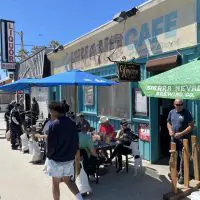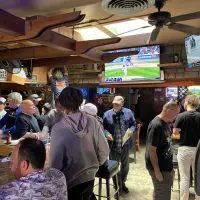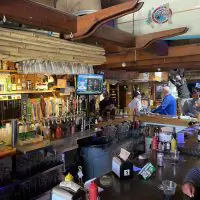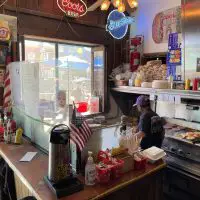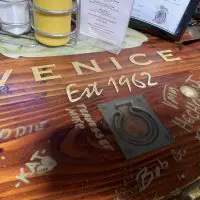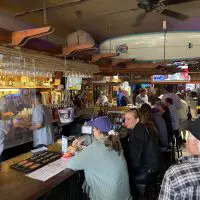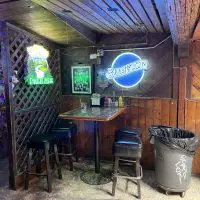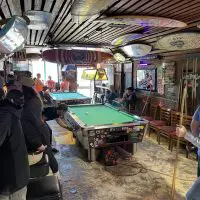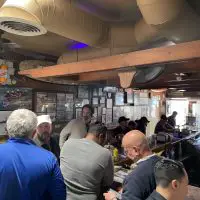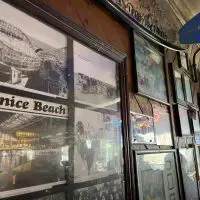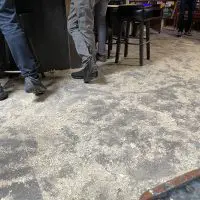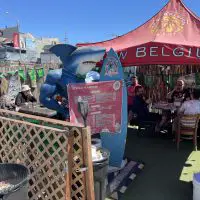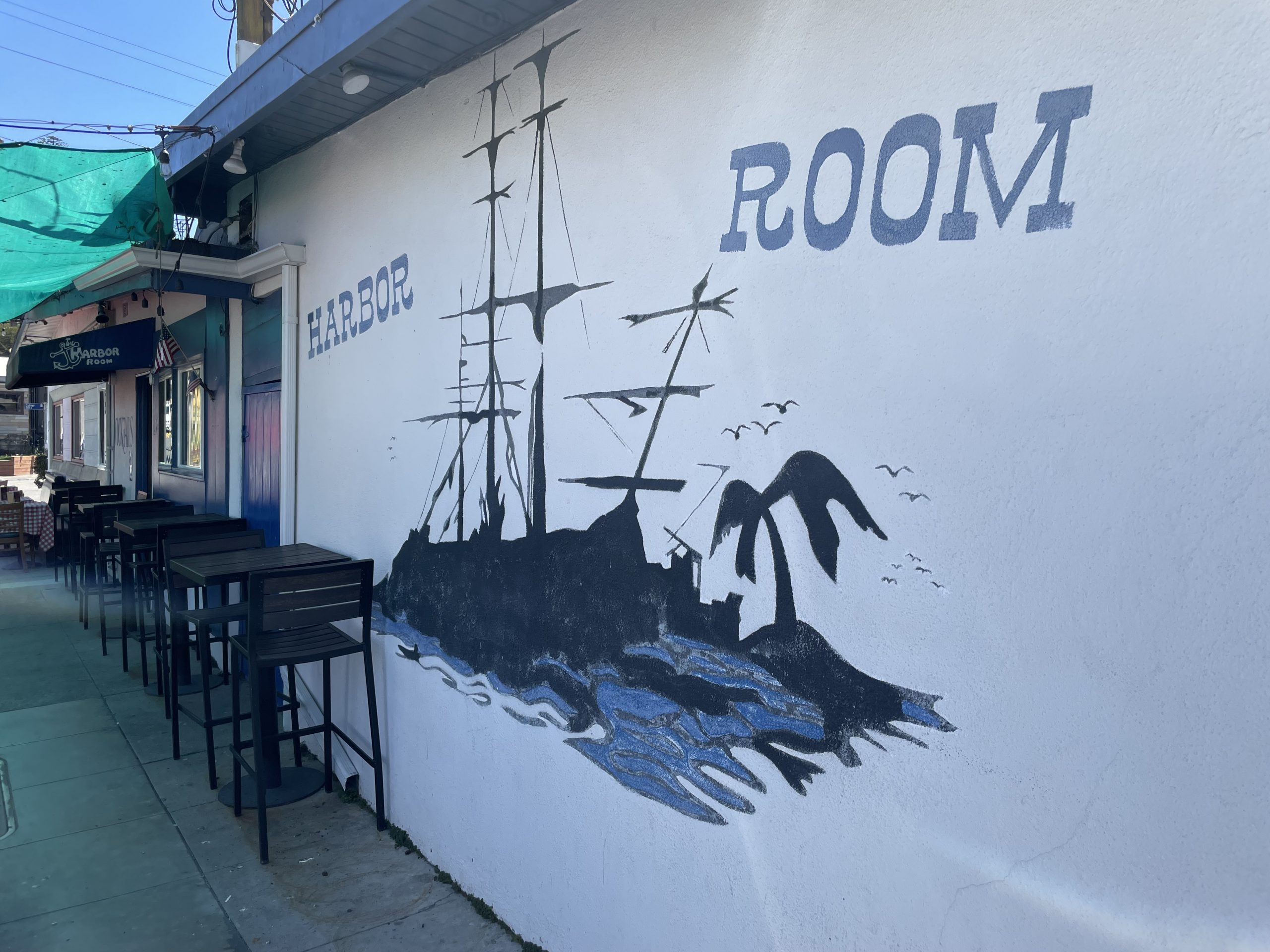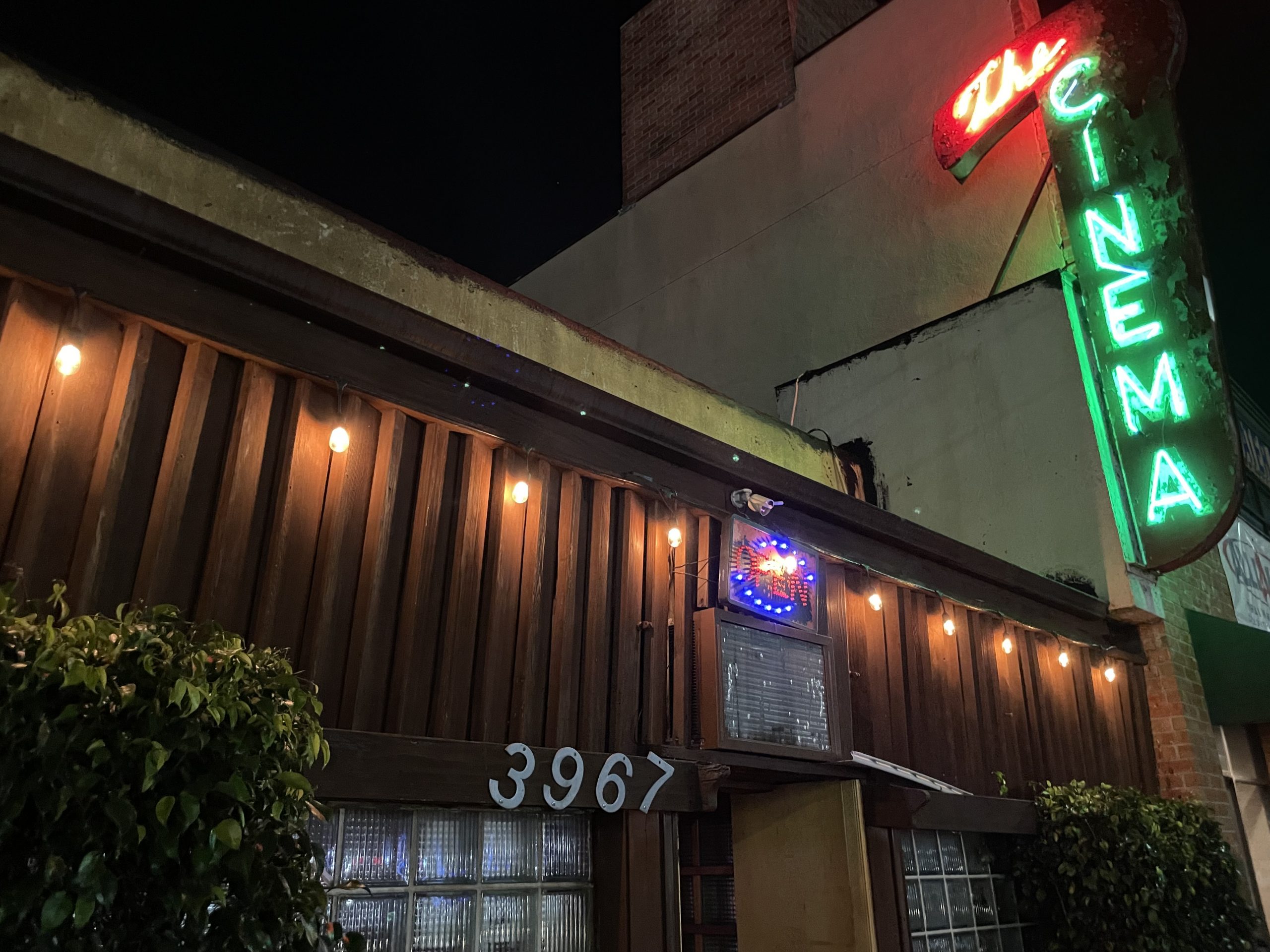Hinano Cafe
Venice, California
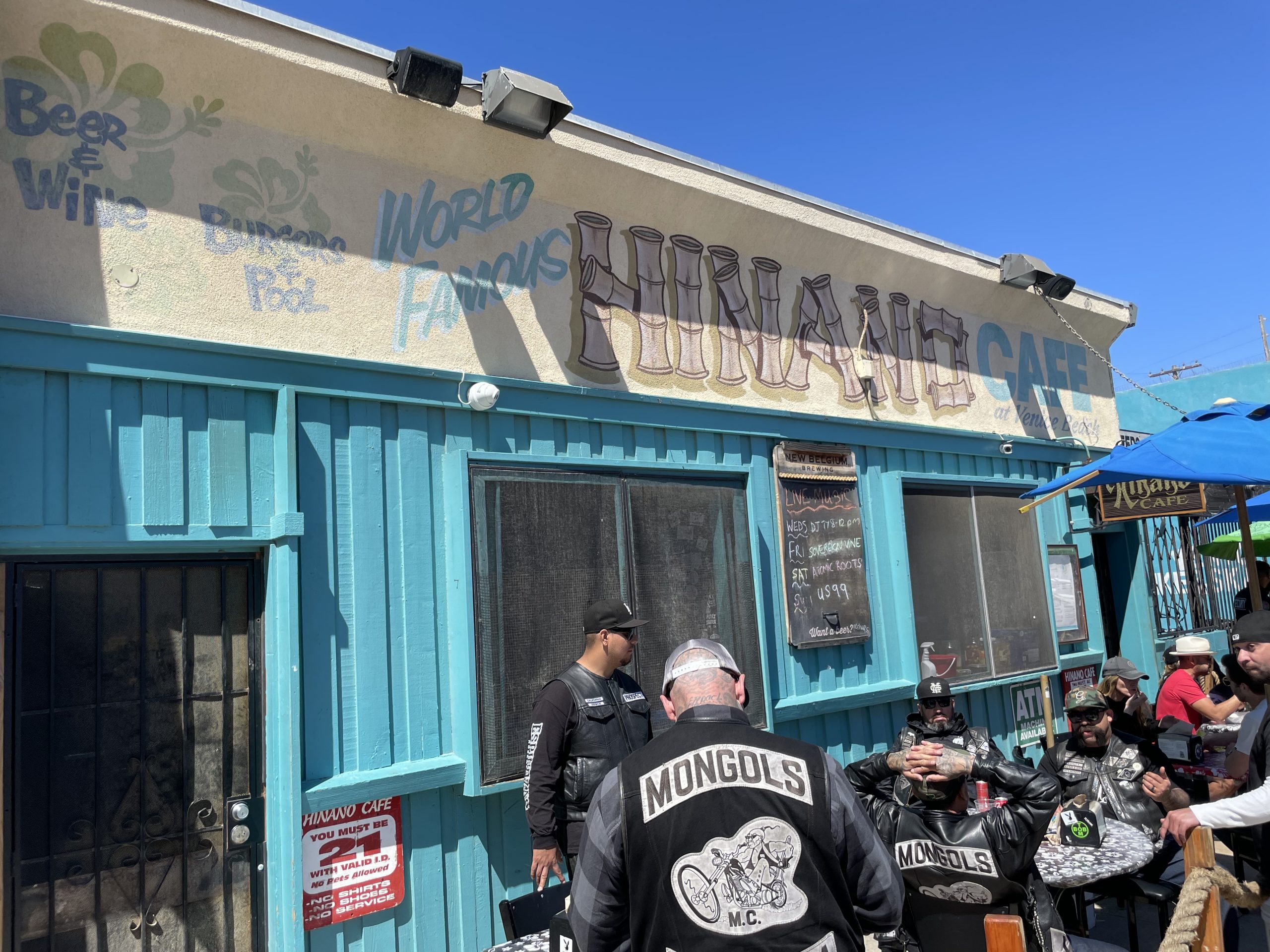
Field Rating
10
out of 10
As perfect as a beach-adjacent dive bar can be.
The Basics
15 Washington BlvdVenice, CA 90292
Connect
Official Site
In Short
Field Note
Beer, burgers and a beach is about as pure as a combination can be, a recipe perfected by Hinano Café, a Los Angeles-adjacent dive bar just steps from Venice Beach. Opened in 1962, Hinano Café embodies the word ‘institution,’ serving the same burgers off the same grill for the entirety of its history, the iconic sign over the front door restored once during that time…by the same artist who created the sign’s first incarnation.
Given its Los Angeles area location, it should come as no surprise that a dose of Hollywood legend creeps into the Hinano Café origin story thanks to the far-flung travels of founder Joseph Larson. Larson joined the production of Mutiny on the Bounty as an extra, traveling to what was then a less-touristy Tahiti where filming took place. On this 1959 trip, Larson happened to stumble into Bar Hinano, one of the more affordable drinking establishments on the island, and happened to meet a distributor of Hinano Beer. Thanks to that fateful meeting, Larson brought the dream of his own Hinano-based bar back to Venice, serving as the first importer of Hinano Beer in the United States and naming his new Venice-area location accordingly.
With that history came some of the celebrity culture of that era, most famously in the form of Jim Morrison.
Hinano Beer remains Tahiti’s most popular beer export, the woman sitting by the ocean on each bottle’s label echoed by merchandise found at Hinano Café. Venice in the 1960s was a different place than today, filled with bars in the same vein as Hinano Café. As the city matured and times changed, most of those businesses changed names or failed, leaving Hinano Café as one of the last standing, unchanged stalwarts of that time period. And with that history came some of the celebrity culture of that era, most famously in the form of Jim Morrison who not only frequented the bar but carved his initials into its wood-lined interior.
Owner Larson left his imprint on Café Hinano, using those early years to build out the bar’s interior decorations and features. The stained glass windows were designed by Larson and his commission of artist Bud Harris resulted in the iconic sign over the front door. When the original sign took on a bit too much wear and tear, Harris was commissioned once again to create an enhanced replica with a bit more durability, ensuring the spiritual continuation of the original sign and those original times.
Current owner Mark Van Gessel purchased Hinano Café with partners Andy Schelich and Lee Glazer when Larson retired in the 1990s. Glazer in particular proved key to the sale, having worked as a bartender at the Venice dive bar since 1963. Though Glazer passed away in 2010, Van Gessel and Schelich have long pledged to keep the Hinano Café as it always has been, down to the sawdust on the floors and the mural along the bar’s exterior. Changes have been made over the years of course, including taking over the next-door laundromat to create what is now the bar’s pool room, but the space feels authentic to its 1962 roots.
Given the Venice Beach location, it comes as no shock that the outdoor seating area at Hinano Café is an inviting, layered experience, stretching from a strip of tables adjacent to the building to a fenced area adjacent to the road with additional tables, some of them shaded. The mural along the top of the building fits its ocean-friendly location down to the blue paint and tiki-style lettering. The restored black sign above the door looks subtle in comparison but provides a nice one-two punch with the bold lettering on the structure itself.
The atmosphere inside feels a bit like the ocean wind swept through and everything was kind of left as it was.
The atmosphere inside feels a bit like the ocean wind swept through and everything was kind of left as it was. Sawdust lines the floor, surfboards hang from the ceiling, framed photos and faded magazine clippings line the walls. The space centers around a central bar that houses both the beer and wine selection (no liquor here) as well as the flattop grill so old that it predates the bar. Here the legendary Hinano Café hamburgers are prepared and though the menu is surprisingly deep with additional options, the burger is a must for a first-time visit. Every burger comes with a side of some kind of crunchy snack, the selection provided determined by luck of the draw.
Not that Hinano Café needs additional amenities, but live music can be caught here Friday through Sunday each week, part of a long tradition that includes a few one-off celebrity sets including visits from Billy Idol and James Taylor. The kitchen keeps relatively late hours, shutting down at 11:30 PM and offers a breakfast-specific menu early in the day (try the breakfast burritos). A pair of pool tables can be found on the backside of the central bar and though Hinano Café has a cash-only heritage, credit cards are now accepted.
And though some Los Angeles-area dive bars can feel more like a lounge than a true dive, Hinano Café thankfully bucks that trend. Wood paneling lines every conceivable inch of the bar’s interior space, down to the long wooden slats that serve as the Hinano Café ceiling. The decorations look long untouched, the popcorn is free, beer is served in frosted mugs or towering pitchers, the crowd is made up of regulars and visitors comingling and the entire building is filled with the smell of burgers on a grill. If California could be captured and expressed in dive bar form, the result would look eerily like Hinano Café.
Related Reviews
Harbor Room
Smallest dive in Los Angeles.
Prince O'Whales
Playa Del Rey divey complex.
Cinema Bar
Culver City’s oldest dive.

